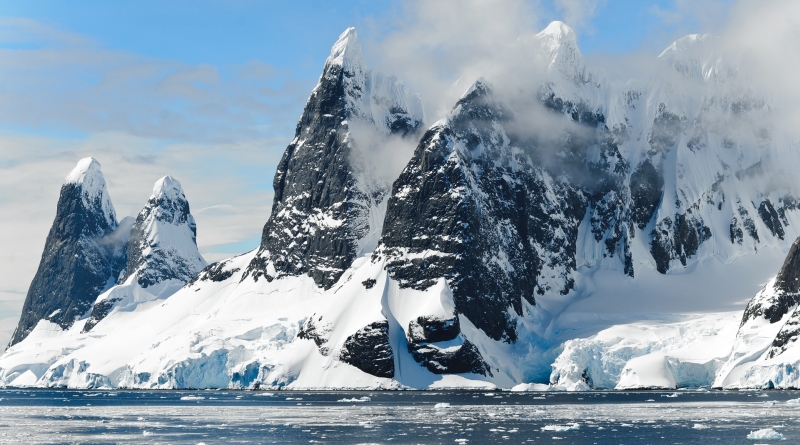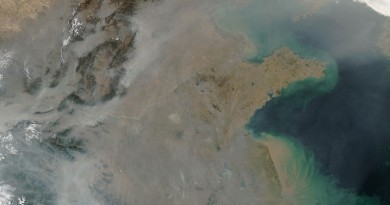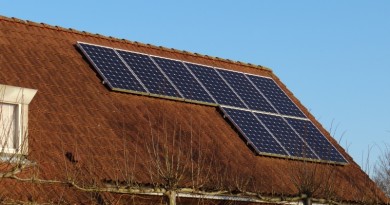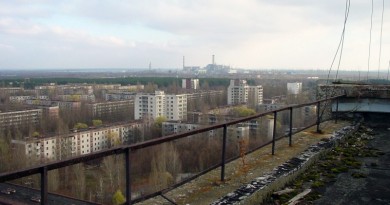Global warming
Contents
Earth is warming fast. There are estimates that in the period between 1900 to 2005 the temperature on our planet has increased in average between 0.4 i 0.8 °C. 22 warmest years ever were recorded in the interval between 1980 and 2005, and 2005 was the warmest year ever recorded. Current estimates predict average increase in temperature till the year 2100 to be between 1.4 °C i 5.8 °C (2.5 °F i 10.4 °F) if greenhouse gas emissions continue their current trend. Global warming and global cooling (ice age) have already happened in far past as the consequence of natural influences and were always long-term phenomenon. For instance last ice age has started about 70,000 years BC, had its maximum around 18,000 years BC, and ended around 10,000 BC. According to the definition, the global warming is the increase of the average temperature on surface of the Earth. This term is today mostly used as the reference to increase of the average earth’s temperature that is happening, and is likely to happen even further because of human activities.
CAUSES OF GLOBAL WARMING
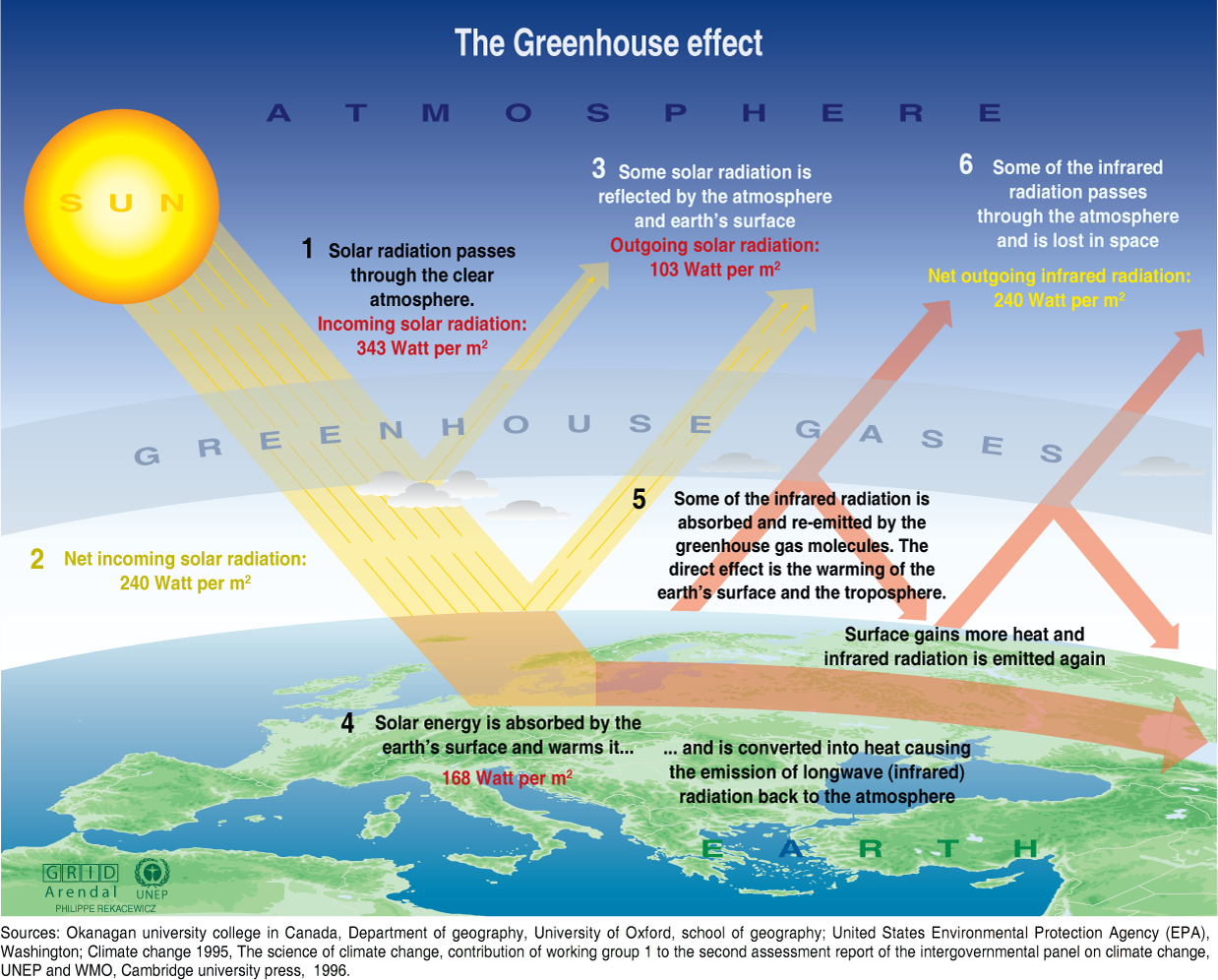
The main cause of global warming is increased level of carbon dioxide and other greenhouse gases that are released into the atmosphere mostly due to the fossil fuels burning (coal, oil, and natural gas) and deforestation for agriculture. Greenhouse gases are stored into higher atmospheric levels where they have double effect on Earth’s temperature surface. The first effect is direct reflection of one part of the Sun’s radiation back into space, and the other is reflecting one part of Sun’s radiation that has deflected from the surface of the Earth back to the Earth (see the image). This second effect is called the greenhouse effect and it is responsible for maintaining the adequate temperatures on our planet. If there would be no greenhouse effect then average temperature on our planet would be around -19 °C, and not around today’s 15 °C. To put it as simply as possible the solution to global warming problem is quite simple, we need to reduce the fossil fuels use and reduce the deforestation to lowest possible level. By doing that we would decrease the amount of greenhouse gases in the atmosphere but this solution is currently not possible because alternative energy sector is still not developed enough to compete with fossil fuels.
The biggest cause of global warming is using fossil fuels (mostly coal and oil). However reducing the amount of fossil fuels used today is very difficult because economy keeps growing and has no time to wait for alternative energy sources that have only just started developing, and are therefore in most cases significantly more expensive compared to fossil fuels. The world’s biggest polluter is United States, followed by China and Russia. Traditional U.S. dependence on fossil fuels has created very strong lobbies that do everything that is in their power to slow the development of alternative energy sources, and China’s recent economic boom mostly oriented on coal industry has played huge part in China’s high emission ranking.
Second cause of global warming is destruction of forests, particularly rainforests. Forests because of photosynthesis process play the extremely important role in maintaining the normal greenhouse gas levels. Plant in the photosynthesis process take CO2 from the atmosphere, and release oxygen back into the atmosphere, and with it influence the total amount of greenhouse gases in the atmosphere. From the other point of view burning forests has double negative effect: burning releases the large amounts of CO2 and less are covered with forests also means lesser ability to absorb CO2 from the atmosphere. Because world’s population is constantly increasing more food is needs, and forests are therefore being cleared to make room for agriculture and cattle. This is the main reason why the largest forest in the world, the Amazon rainforest called also the “lungs of the world”, suffers from huge deforestation.
THE CONSEQUENCES OF GLOBAL WARMING
Some of the possible global warming consequences are:
- Sea level rise because of glaciers melting that could under some estimates be as high as 18-59 cm by the end of the 21th century
- frequent extreme weather events (powerful storms, heat waves, floods, hurricanes)
- increase in the severity of extreme weather event (deadliest storms and floods, longer heat waves)
- melting of the glaciers will cause flooding on short-term and water shortage on the long-term
- the warmer environment is likely to spread new diseases and cause different health issues
The estimated consequences of global warming are not always negative. Global warming leads to climate change and this will have positive effects in some regions while other regions will feel the negative consequences of global warming. Scientists currently cannot predict what exactly will happen and what will be the reach of global warming phenomenon. Therefore it is not possible to evaluate whether global warming will have more positive or more negative impact. However, scientists warn that the insecurity of the forecast alone is the best possible reason to act in advance, and decrease as much as possible the consequences of global warming. Since global warming is likely to hit some areas more than other many believe that global warming is likely to cause big population migration.
POSSIBLE SPEED-UP OF GLOBAL WARMING
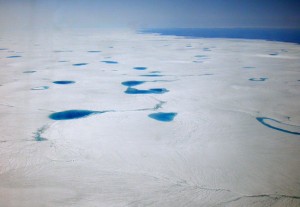
According to some indicators and certain estimates global warming will increase the intensity of factors that influence the global warming and with it further accelerate warming of the planet. Factors that are accelerating global warming are also creating positive feedback among themselves. Some of these factors will be mentioned in further text.
- 11,000 years ago in Siberia a giant layer of ice was created that covered swamp vegetation therefore capturing large quantities of methane. Melting of this ice in the next few decades will release large quantities of CO2 into the atmosphere, and methane is extremely potent greenhouse. One kg of methane has the same greenhouse effect as 25 kg of carbon dioxide.
- According to some estimates global warming could cause loss of carbon in surface ecosystems and increase the amount of carbon in atmosphere. All climate prediction models agree that this secondary effect is very much possible but what they do not agree is the level of influence this effect will have. Estimates usually predict temperature rise from 0.1 °C to 1.5 °C by the end of this century.
- The third big factor of additional increase of average Earth’s temperature is big forest fires. These fires release huge quantities of carbon dioxide, and this also leaves fewer forests to absorb carbon dioxide so instead of being absorbed it remains in the atmosphere. As the temperatures will increase so will the probability of huge forest fires, and this another example of positive global warming feedback.
- Another factor that will contribute to speeding up the global warming is the difference in reflected/absorbed amount of Sun’s energy, and this factor could cause big problems in sea level rise. The different forms of surfaces have different coefficients of reflecting/absorbing Sun’s radiation. Here are some examples of reflecting the isolation that comes to the Earth’s surface:
- fresh snow can reflect up to 95% of radiation
- ice reflects up to 90% of radiation
- dry sands reflect between 35% to 40% of radiation
- broadleaf deciduous forest reflect 5-10% of radiation
- needleleaf coniferous forest reflects 10-20% of radiation
- grasslands and similar surfaces reflect 15-20% of radiation
- sea surface reflects about 10% of radiation
- cloud reflectivity can be from 40% all the way to 90%
- the average reflectivity between atmosphere and Earth’s surface is around 30%
The icy surface reflects back into space up to 90% of sun’s radiation, and therefore indirectly cools the Earth, while water from the other side absorbs more than 90% of radiation, and therefore increases the sea temperatures. Increased sea temperature that surrounds glaciers causes even faster melting of the ice, reducing the areas covered with ice as the sea absorbs more and more of the Sun’s radiation, heating up in the process. The warmer seas that surround the glaciers is the obvious problem of reduction in surface’s reflectivity but scientists still believe that this is not the worst problem that results from this but that the worst problem is the increased number of small lakes that appear on the surface of the glaciers. These lakes create additional heat with its absorbing of Sun’s radiation, and this heat does not only further melt the glaciers but also disrupts the structure of the glaciers since water creates tunnels under which it can come to land that is below the glaciers, and there further create lakes and channels. These processes have already taken place at Greenland and Antarctic.
CONCLUSION
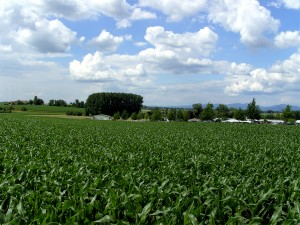
Global warming is already today having some effect on climate and weather conditions on our planet. According to reports from World Meteorological organization the increase in temperature is mainly to blame for increased number of floods and droughts. High temperatures make drought season last longer in Africa, the crops are therefore reduced and this causes the problems in form of food and water shortages. Europe, North America, and some parts of the Asia are blessed with moderate climate, and therefore have advantage compared to the rest of the world because climate change won’t so soon affect these areas- first certain transformation phases will have to happen in order for climate to transform from moderate to let’s say tropical or desert climate. The areas like Sub-Saharan Africa will have much bigger problems because life is even today very harsh in these areas, and with global warming it will be even worse, perhaps it will even eventually disappear.
There are two main principles on how to act to prevent climate changes: prevention and adaptation. Since prevention of climate change is extremely expensive process where people should completely change their opinion about energy and energy consumption we will probably have to adapt to new climate conditions. We can only hope that this new climate conditions will be good enough to ensure humanity and normal way of life on our planet.
